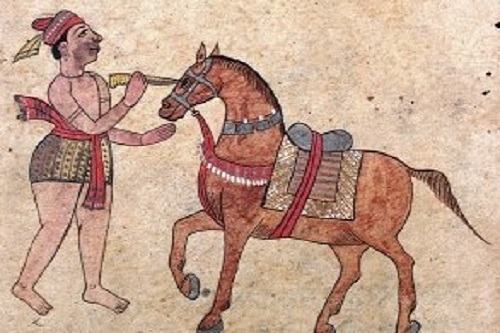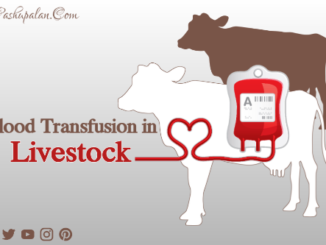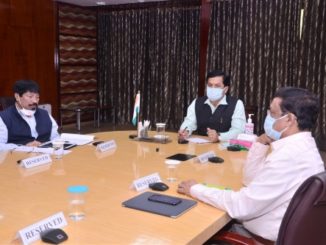Animal Healthcare in India
Animal Healthcare and veterinary medicine is an ancient profession with a long and distinguished record of service to animals and mankind. More than an economic enterprise, livestock keeping is a centuries-old, invaluable tradition of ancient India. Some of the most important cultural and religious institutions and traditions of the Hindus are linked to domesticated animals. There is ample evidence to suggest that animals were domesticated before the beginning of the written history. The ancient history and its recording by written or unwritten sources are somehow seen as sacrosanct and therefore not open for any revision. History can be traced from excavation findings, old scriptures, and edicts. Ancient Indian literature in the form of the holy ‘Vedas’, ‘Puranas’, ‘Brahmanas’, ‘epics’, etc. is flooded with information on animal care, health management, and disease cure. Cattle husbandry was well developed during the Rigvedic period (1500–1000 BC) and the cow (Kamdhenu) was adored and considered the ‘best wealth’ of mankind. ‘Atharvaveda’ provides interesting information about ailments of animals, herbal medicines, and cure of diseases. (R. Somvanshi 2006).

According to evidences among the original and authentic authors on Indian veterinary Science are Shalihotra, Palakapya, Susruta, Rajaputra, Vaisampayana, Vyasa, nakula, Sahdev, Garga, Mrgasarma, Brahspati, Narada, Gana, Vatsya, Manu, Kautilya. Of all the above authors Shalihotra, susruta and Palakapya are the most prominent one. The exact period when they lived is difficult to determine, but evidences show that they lived in very remote age.
Shalihotra, the first known veterinarian, was an expert in horse husbandry and medicine and composed a text ‘Asvashastra’. He is regarded as ‘The father of veterinary Science in India’. Seventeen Shloka of ‘Asvashastra’ deals with disease prognosis from eye symptoms and two shloka are related to judging the age of Horse (Capt M.S. Apte 1939). In one of the manuscript entitled ‘Asvayurveda Siddhayoga Samgraha’ (P.P.S. No 11251 and Burnell’s catalogue No. 12302, S.M. Library, Tanjore) Shalihotra describe himself as son of God Surya and having learned the science of Horses from Brahma himself and as having taught to his disciples. Shalihotra was the teacher of Susrut, who is considered as ‘Father of Hindu Surgery’ and his work ‘Susruta Samhita’ is the earliest known work dealing with surgery. According to evidence with Indian scholars, Dhanvantari’s direct disciple of Susruta belonged to 600 BC. He made great improvement in the general techniques of surgery and performed many new and major operations. Susruta Samhita testifies to the great scientific knowledge of the ancient Indian surgeons. It was translated into Arabic before the end of 800 AD and was called ‘Kitab-Show-Shoon-a-Hindi’ or ‘Kitab-i-Susrud’; Cellars translated into Latin and Hassler into German. The students were taught surgical techniques first on dummies and later on dead bodies. Before Susruta’s time, knowledge and practice of surgery in India was more or less of the same standard as in contemporary civilizations like Egypt, Mesopotamia, and Greece.
During the regime of King Dasharath (1800 BC), Sant Palkapya composed a Sanskrit text ‘Gaj-Ayurveda’ and ‘Hasti-Ayurveda’ in which he narrated his knowledge about elephants. Palakapya was an expert dealing with elephants and his text primarily dealing with elephant medicine and dedicated to Lord Ganesha. Elephant medicine and surgery were divided into four parts by Palakapya, viz., Maha Rogsthan or major diseases, Ksudra Rogasthan or minor diseases, Salyasthan or surgery, and materia medica-diet and hygiene. ‘Hasti- Ayurveda’ also mentions about anatomy of elephant, treatment of different kinds of diseases, training of elephant, and also classification of elephants on the basis of a number of characteristics (R. Somvanshi 2006). Palkapya was the ultimate authority on elephants in the world. Kautilya quoted him in his book ‘Arthasastra’.
During Mahabharata period (1000 BC), Nakula and Sahadeva, the two Pandava brothers were experts of horse and cattle husbandry. Nakula composed ‘Vaidyaka Sarvasva’ all about medicine and ‘Asva Chikitsa’ about the treatment of horses and Sahadev composed ‘Vyadhisindhu Vimardana’ i.e. the cure of ocean of diseases. Lord Krishna belonged to the period 900–1000 BC. Cow husbandry was well developed in Mathrua. Cow milk, curd, butter, whey, etc. were produced in sufficient quantities, in and around Mathura.
Another great author Vayasa (Vaisampayana) was an expert with horses and elephant. He composed ‘Asvayurveda Sara Sindhu’ dealing in treatment of Horses, ‘Gajashastram’ i.e. the science of elephant, ‘Gajalaksahna Chikitsa’ i.e. treatment of ailment of elephants.
Animal husbandry made great progress in the Mauryan age (322–232 BC). The Mauryan age proceeded the period of Buddha and Mahavir, who preached non-violence towards animals. The earliest Buddhist text ‘Suttanipata’ describes cattle as a giver of food, beauty, and happiness (annada, vannada, and sukhada) and therefore deserves to be protected. According to Kautilya’s ‘Arthashastra’, cow was a worshiped animal. It was one of the first duties of the King to worship the cow with her calf and bull. (R. Somvanshi 2006).
The present-day Veterinary Council of India adopted its insignia, the sculpture of a bull and a part of the text of the stone edict from the period of Emperor Ashoka (around 300 BC), which projected the veterinary profession as its “best heritage” (Singh, 2002). Ashoka, the grandson of Chandragupta, who turned to Buddhism after Kalinga war, gave veterinary science a new turn in India. It is described that the first veterinary hospital existed in Ashoka’s regime (Schwabe, 1978).
Conclusion
From the above discussion it is clear that people have great knowledge on animal healthcare in Ancient India. In earlier period works mainly focus on Horse and elephant clearly signify that during that time these two animals were important because of their role in war. The ancient literatures on veterinary science remain unexploited mainly because like in Human Medicine there is no branch of Ayurveda in veterinary science. Most of the work is in Sanskrit and other regional languages. A brief review of the historic knowledge of animal healthcare can open a window on the traditional system of veterinary medicine in India.
References
- C.M. Singh, 2002. The insignia of the Veterinary Council of India adopted from Emperor Ashoka’s edict. In: Third Convocation of National Academy of Veterinary Sciences (India) and National Symposium on Historical Overview on Veterinary Sciences and Animal Husbandry in Ancient India (Vedic and Ashokan Period), 16–17 April 2002, Indian Veterinary Research Institute, Izatnagar, Uttar Pradesh, India. pp. 1–3.
- Capt M.S. Apte, 1939. Seventeen Slokas of Shalihotra’s Asvashastra Indian.vet.J.,15, 415, 1939.
- R Somvanshi, 2006. Veterinary Medicine and Animal Keeping in Ancient India Asian Agri-History Vol. 10, No. 2, 2006 (133–146)
- Schwabe, C.W. 1978. Cattle, Priests and Progress in Medicine. University of Minnesota, Minnesota, USA.






2 Trackbacks / Pingbacks